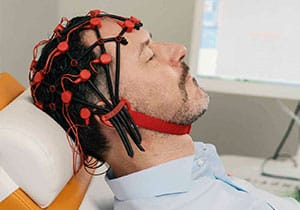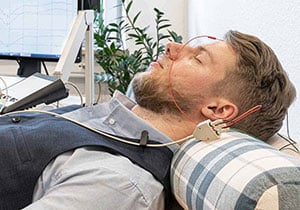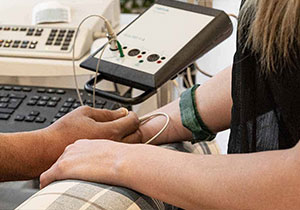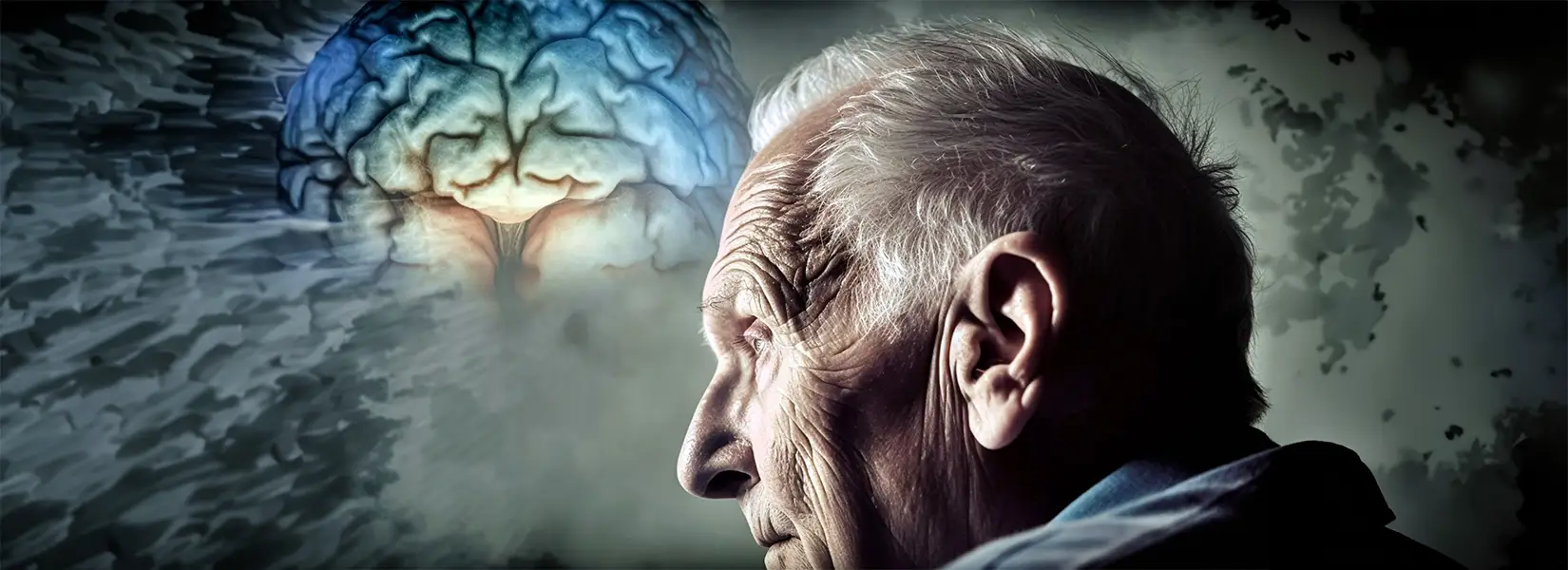
Alzheimer’s dementia
In Alzheimer’s dementia, our therapy aims to stimulate brain activity, slow down the progression of the disease and measurably improve quality of life.
What is Alzheimer’s disease?
Alzheimer’s disease (also known as Alzheimer’s dementia) is a neurodegenerative disease of the brain. It mainly occurs in people over the age of 65 and is the most common cause of dementia, accounting for around 60 to 70 percent of all cases. However, patients are now becoming increasingly younger. As many as 10 percent of those affected by Alzheimer’s are under the age of 60. Alzheimer’s dementia is characterized by a gradual, progressive progression: Those affected gradually lose their memory, language, orientation and ultimately their independence.
Alzheimer’s: first signs and symptoms
Alzheimer’s disease often begins inconspicuously. The first warning signs are short-term memory problems, difficulties retaining new information or following conversations. This condition is often described as “mild cognitive impairment” (MCI). As it progresses, problems occur with orientation, language, judgment and coping with everyday life. Later, personality changes, anxiety, depressive symptoms and neuropsychiatric abnormalities are added.
Alzheimer’s: possible causes and risk factors
The exact causes of Alzheimer’s are still not fully understood. Classical research focuses on protein deposits in the brain: beta-amyloid plaques and tau fibrils. They disrupt the communication of nerve cells and lead to their demise in the long term. Genetic factors also play a role, particularly in the early onset of the disease.
Recent studies show, however, that inflammatory processes, cardiovascular disease, diabetes, lack of exercise and — increasingly in focus — environmental toxins and heavy metals can also increase the risk. Added to this are the pressures of our time: chronic stress, social insecurity and an ageing population.
Modern diagnostics for Alzheimer’s
The quickest and most precise diagnosis possible is crucial in order to differentiate Alzheimer’s from other forms of dementia. In addition to classic imaging (MRI, CT, PET), our Schmidt-Staub practice uses procedures such as electroencephalography (EEG), evoked potentials (EP) and nerve conduction velocity (NLG) measurements. We also analyze laboratory values, hormone levels and possible environmental stress. This is the only way to narrow down the causes and develop individual treatment plans.
Alzheimer’s therapy today: there are more options than just medication
There is currently no cure for Alzheimer’s disease, but its progression can be slowed down and the quality of life significantly improved. Classic medications such as acetylcholinesterase inhibitors or memantine act on certain neurotransmitters in the brain, but usually only have limited effects.
At the Schmidt-Staub practice, we offer modern neurology that opens up new opportunities:
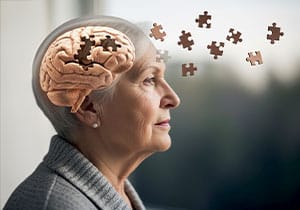

Transcranial Pulse Stimulation (TPS) and rTMS activate specific areas of the brain and measurably improve attention, language and orientation.

Deep TMS, tDCS and neurofeedback can also stabilize neuronal networks.

Ketamine has proven to be a quick and effective option for accompanying depression

We also use acupuncture and orthomolecular medicine to strengthen self-healing mechanisms and relieve the body and mind.
Our goal is to maintain the quality of life of our Alzheimer’s patients, to slow down or even stop the progression of Alzheimer’s disease and, above all, to achieve symptom improvements.
Alzheimer’s today no longer means that everything is lost with the diagnosis of “Alzheimer’s dementia”. The focus today is on preserving abilities for as long as possible, making everyday life easier and relieving the burden on relatives. Every delay in the progression of the disease gives our patients and their relatives valuable time — time for conversations, independence and a life full of activity.
When measuring evoked potentials (EP), bioelectrical activities of the brain are registered that arise in response to certain external stimuli (visual, acoustic, sensory). These examinations are valuable for detecting disturbances in the pathway systems involved in the transmission of these external stimuli.

